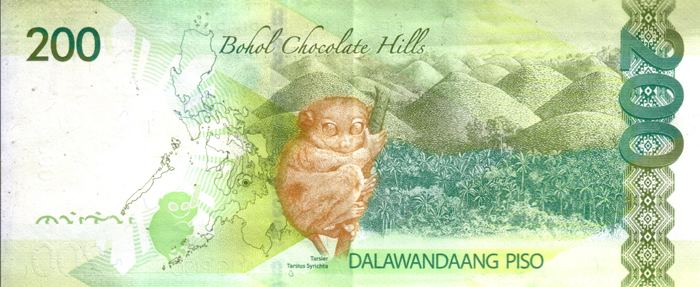Value ₱200 Height 66 mm | Width 160 mm | |
 | ||
Security features Security fibers, watermark, see-through mark, concealed value, security thread Paper type 80% cotton
20% abacá fiber Years of printing 1903–1928; 1949-1957; 2002–present | ||
The Philippine two hundred-peso note (Filipino: Dalawandaang Piso) (₱200) is a denomination of Philippine currency. Philippine president Diosdado Macapagal is currently featured on the front side of the bill, President Gloria Macapagal-Arroyo's inauguration as 14th President of the Philippines (EDSA People Power II) is on the lower-left side on the bill just in front of the Independence House, and the Barasoain Church is also present on the obverse side of the bill. The Chocolate Hills and the Philippine tarsier is featured on the reverse side.
Contents
Pre-independence history
Post-independence history
Macapagal first appeared on the two hundred peso bill upon the reintroduction of the denomination in 2002.
Commemorative issues
Trivia
References
Philippine two hundred peso note Wikipedia(Text) CC BY-SA
